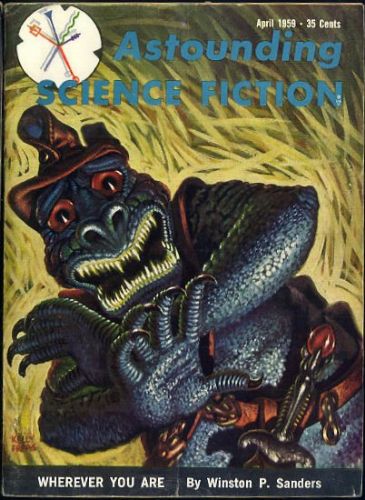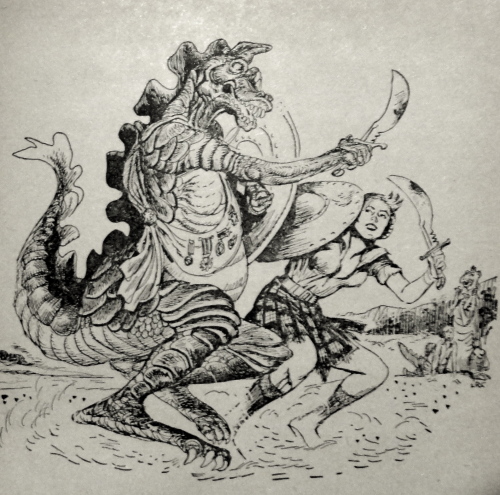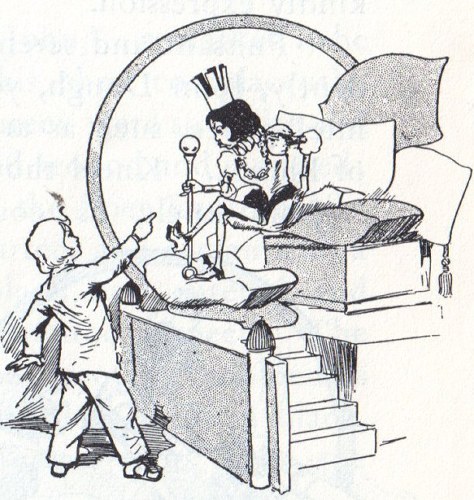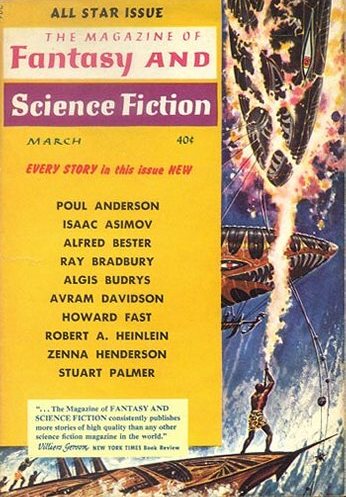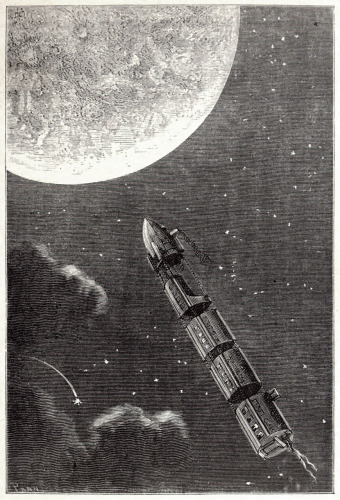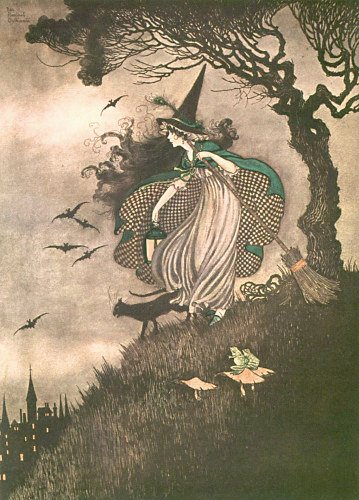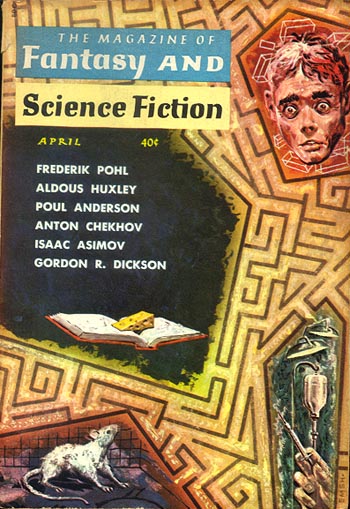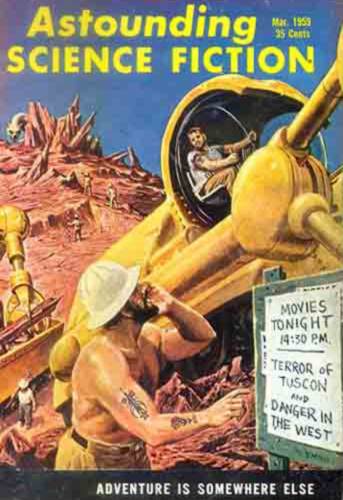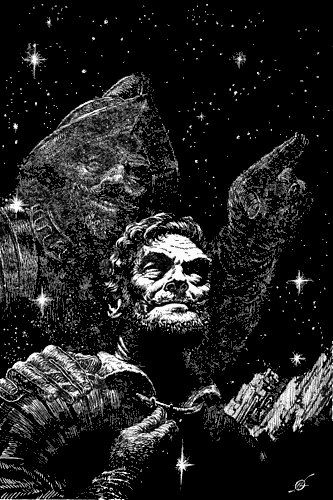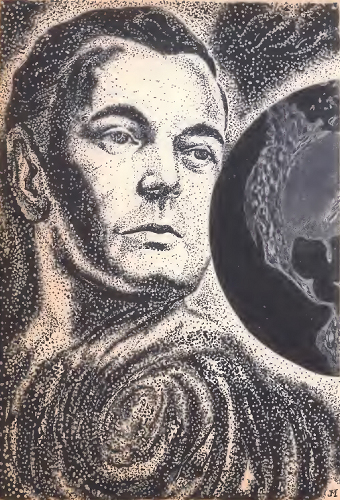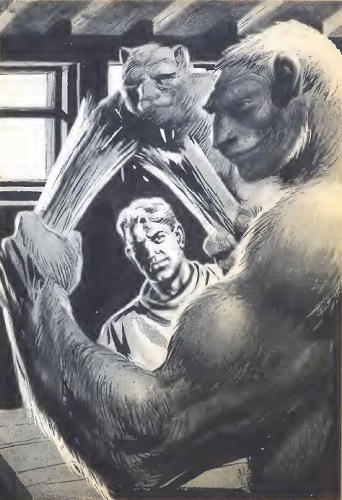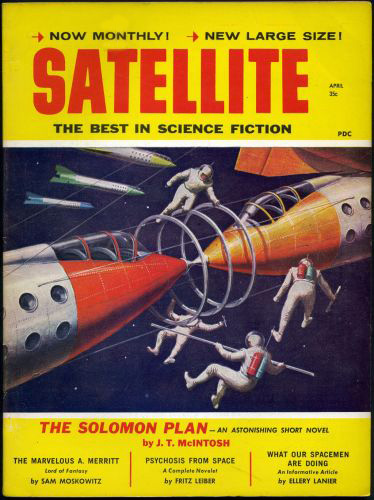
by Ray Pioch
And now for something a bit different.
Back in '56, famed pulp editor, Leo Margulies, launched Satellite, a bi-monthly science fiction digest with the gimmick that it contained a full-length short novel as well as a few short stories. I always had a soft spot for that mag. One of my favorite novels was Planet for Plunder by Hal Clement and Sam Merwin; it came out in the February '57 ish, and I read it on the beach during one of trips to Kaua'i. It's an excellent tale of first contact mostly from a truly alien viewpoint. Highly recommended.
Late last year, Satellite went out on hiatus. Then, at the beginning of this year, Satellite returned with Cylvia Kleiman at the editorial helm. The magazine sported a full-sized format, presumably to stand shoulder-to-shoulder with the slicks. No longer featuring novels, it dubbed itself "The Best in Science Fiction."
Who could resist a pitch like that? So the other day, I picked up this month's (May) and last month's (April) issues. What did I find inside?
I suppose one could argue that some of the writers are among science fiction's best, but these are definitely their second-rate stories. This is not the Satellite I used to know and love. Let's have a look, shall we?
The lead story is by the reliable J.T. McIntosh; The Solomon Plan is easily the best fictional piece in the magazine. In Plan, a terran spy tries to succeed where all of his predecessors have failed before: solving the mystery of the backward planet of Bynald. Where the other planets of the 26th century terran federation enjoy a correspondingly advanced quality of life, the hyper-patriotic Bynald seems to be stuck in the 20th century. Moreover, their population is unaccountably low given the length of time it has been settled.
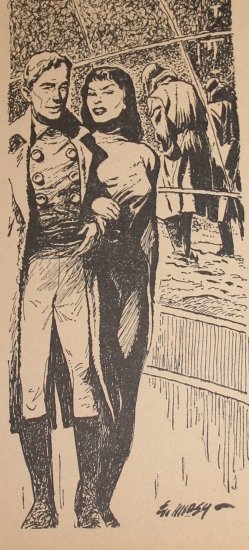
by Leo Morey
McIntosh creates a nice group of characters, including a couple of reasonably developed females. The solution to the mystery is rather implausible, and the ending rather pat, but the story does not fail to entertain. I would have been more impressed had Plan not been a reprint–originally appearing in the February 1956 New Worlds Science Fiction.
A regular feature of Satellite is a biographical piece on one of the antediluvian forefathers of science fiction. In this case, it is a somewhat hagiographic piece by Sam Moskowitz on the justifiably famous A. Merritt. I'm a sucker for history, so it was worth picking up this ish for the piece.
The rest of the magazine is mediocre at best. Fritz Leiber's Psychosis from Space was, reportedly, an old story that he thought so little of that he forgot of its existence until Satellite asked him for a contribution. An astronaut goes out on humanity's first faster than light mission and returns able only to stumble about aimlessly and babble meaninglessly. Turns out his brain is running backwards. There is also some intrigue surrounding the astronaut's doctor and his attempts to coerce information about the trip from his patient. At least the (female) nurse character is competent and resourceful.
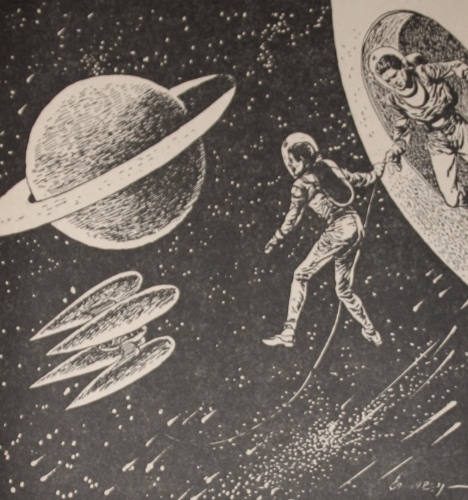
by Leo Morey
The duel of the insecure man, by newcomer Tom Purdom, is rather strange. In the far future (1988), it has become popular to engage in duels of cutting questions, the goal being to lay bare the soul of one's opponent and leave them a humiliated wreck. I am given to understand that this story was heavily hacked in editorial, so I won't dignify the resulting kluge with further verbiage.
I did enjoy Ellery Lanier's rather star-eyed account of the American Rocket Society meeting. In particular, I was excited to see his report on the Mouse in Able project. For those who don't know, prior to the Air Force's Pioneer missions, the Thor-Able rocket was used in suborbital shots to test re-entry nose cones. Since scientists abhor unused space as much as nature does, a mouse was included as part of the payload.
What makes this story particularly interesting is that the project was the brainchild of one of the very few woman scientists working in the space program: Laurel 'Frankie' Van der Wal, an amazon of a lady both in stature and fiery spirit. At some point, I'll give you all the inside story on that project; it is both enlightening and humorous.
Algis Budrys' The Last Legend is fair but not up to his usual standard. It's a traditional gotcha story of an older generation of science fiction: an astronaut makes humanity's first trip to another star, the journey having been previously unsurvivable by living things. After returning as a hero, it turns out that he's just a robot.
Robert Wicks' Patient 926, in which all children are inoculated against imagination, and Henry Slesar's Job Offer ("Dig this! The post-nuclear mutant is a normal human!") are both unremarkable in the extreme.
In sum, Satellite is definitely bargain-bin science fiction, though it is not without its charms. I have trouble seeing it surviving much longer, especially out on the news stands next to Life and Time.
Next up, the other half of the double-feature that included The Blob!
(Confused? Click here for an explanation as to what's really going on)
This entry was originally posted at Dreamwidth, where it has comments. Please comment here or there.

